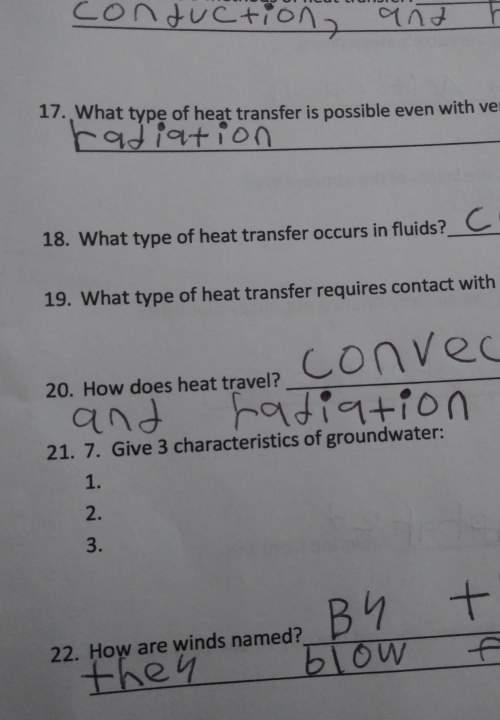
Physics, 25.11.2019 22:31 justapointie
Coronary heart disease is caused by a buildup of plaque in the arteries that supply blood to the heart. when the flow of blood to the heart is restricted or blocked, the heart can be damaged due to a lack of oxygen. further, if a large piece of plaque buildup gets dislodged from an artery wall, it can get stuck in other arteries throughout the body, including arteries in the brain. for simplicity, let's assume that the artery is cylindrical with a radius of r. the flow rate of a viscous fluid is given by poiseuille's law q=(π/8)(δp/ηl)r4.
1.) if plaque buildup reduces the radius of the artery by a factor of 2, by what factor does the flow rate change?
a.) the rate is 4 times the original.
b.) the flow rate is 1/4th of the original.
c.) the flow rate is 16 times the original.
d.)the flow rate is now 1/16th of the original.
2.) if the plaque buildup (modeled as a cylinder as well) completely blocks the artery, a pressure difference of pbetween each side of the clot builds up. what is the force on the clot?
a.) 2pπr
b.) 2pπr2
c.) pπr2
d.) p
3.) if the clot breaks free and only experiences a force due to the blood pressure, what is the relationship between the pressure on each side of the clot as it moves with a constant velocity toward the heart?
a.) the pressure on the side closest to the heart is higher because the clot is moving toward the heart.
b.) the pressure on each side is the same.
c.) there is a pressure differential in order to keep the clot moving.
d.) the pressure on the side furthest from the heart is higher because the clot is moving toward the heart.

Answers: 1
Another question on Physics


Physics, 21.06.2019 19:50
An object is dropped from a tower, 400 ft above the ground. the object's height above ground t seconds after the fall is s(t)equals400 minus 16 t squared. determine the velocity and acceleration of the object the moment it reaches the ground. the velocity of the object the moment it reaches the ground is nothing ft/s.
Answers: 1

Physics, 22.06.2019 05:30
An object weighs 40n in air, weighs 20n when submerged in water and 30n when submerged in a liquid of unknown density. what is the density of the liquid?
Answers: 2

Physics, 22.06.2019 11:00
Afisherman notices that his boat is moving up and down periodically without any horizontal motion, owing to waves on the surface of the water. it takes a time of 2.20 s for the boat to travel from its highest point to its lowest, a total distance of 0.670 m . the fisherman sees that the wave crests are spaced a horizontal distance of 5.80 m apart. (a) how much is the wavelength? (b) find the period of the wave. (c) how fast are the waves traveling? (d) what is the amplitude a of each wave?
Answers: 3
You know the right answer?
Coronary heart disease is caused by a buildup of plaque in the arteries that supply blood to the hea...
Questions


Mathematics, 17.10.2019 22:00

Physics, 17.10.2019 22:00


History, 17.10.2019 22:00


Biology, 17.10.2019 22:00


History, 17.10.2019 22:00


Biology, 17.10.2019 22:00

History, 17.10.2019 22:00

History, 17.10.2019 22:00


Mathematics, 17.10.2019 22:00



English, 17.10.2019 22:00





